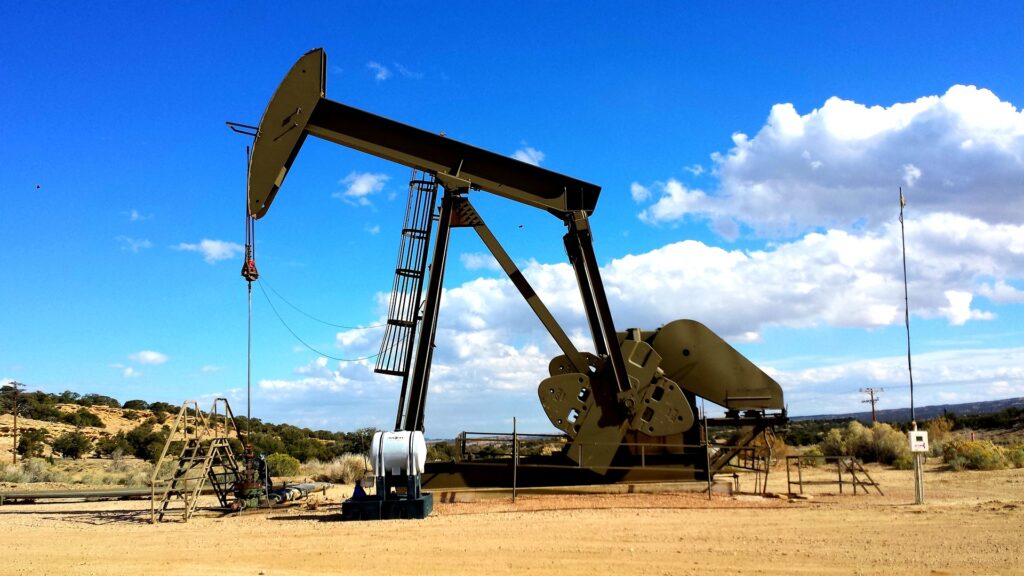By international standards, the Egyptian government tightly controls fossil fuel prices for consumers. Since July 2018, the state has reviewed oil and gas prices every three months, raising them a nominal EGP 0.25 per liter each time. The exception was in July when the increases ranged from EGP 0.5 to EGP 1 per liter.
In 2023, oil and gas prices could change significantly. The weather, energy strategies and economic outlooks of oil producers and developed countries are likely to result in volatile demand and costs throughout the year. In its Dec. 6 “Short-Term Energy Outlook,” the U.S. Energy Information Administration (EIA) said global production should stabilize this year, though price volatility will “remain high.”

Oil
As the fuel most Egyptian commercial and private vehicle owners rely on, the price of oil is critical. CEIC Data, an aggregator portal, said the number of vehicles on Egyptian roads reached 7.35 million in 2021, with CAPMAS noting that nearly 51,000 used natural gas.
The EIA bases its oil price forecasts on global inventory levels, calculating they would drop by 200,000 barrels a day in the first half of 2023 before increasing by almost 700,000 in the second half. The report said that is “slightly more crude oil production … than we previously forecasted.” The EIA’s “Brent crude oil forecast average [is] $92.36 per barrel in 2023, $3 less than … forecasted” in November. By the end of 2022, oil prices were just under $81 per barrel compared to estimates of just over $101. A significant contributor to the drop in 2023 will likely be the United States, where the EIA expects production to reach 12.95 million barrels daily compared with 12.01 million in 2022.
Fitch Ratings estimated in a Dec. 5 note that oil will drop to $95 per barrel in 2023. “Oil price assumptions remain unchanged: we continue to expect price moderation due to lower economic growth, which will reduce demand in the short term. … Easing geopolitical pressures in the longer term will lead to further price declines.” The note said OPEC+, a cartel of the biggest oil producers, will continue to “target a broad balance … by changing production quotas and available crude supplies.”
Holger Schmieding, a chief economist at Berenberg, a privately owned bank, sees consumer sentiment depressing oil prices in 2023. He told CNBC in November, “Consumer confidence has plunged so badly that the recession will likely not be shallow.”
Other financial institutions forecast a rise in oil prices. In its December note, Bank of America said Brent crude prices could reach $110 per barrel in 2023, estimating an average price throughout the year of over $100. It added that oil prices “will generally be lower in the first quarter of 2023.”
Goldman Sachs predicted “oil could surge to $125 per barrel” by the end of 2023. It said China’s recent decision to relax COVID-19 lockdown restrictions means the economy should recover, raising the country’s demand for oil. David Reese, a senior emerging market economist at Schroders, said in December that China’s GDP would grow by 5% in 2023 compared to 3% in 2022.
An unquantified factor affecting oil prices in 2023 is G7 nations and Australia agreeing not to buy Russian crude oil for more than $60 per barrel. The decision extends to national companies buying, selling and transporting Russian crude. Analysts talking to Business Insider expect Russia’s oil exports to drop by 1 million barrels a day as a result.
That decision will make it “increasingly difficult to achieve a consensus on oil price targets within OPEC+,” said Fitch Ratings. The cartel’s most influential members are the GCC nations and Russia, and it doesn’t include the United States or European countries.

Natural gas
The Egyptian government sees natural gas as the country’s fuel of the future. Egypt is a net exporter, with rising prospects to ship liquified natural gas (LNG) to Europe as an alternative to Russian gas. Additionally, the government wants to increase the number of cars using natural gas now that most factories and public transportation rely on it.
The EIA predicts natural gas prices will increase in 2023, likely topping $6 per million British thermal units (MMBtu) during the first quarter, up from November’s average of $5.50 MMBtu. However, it “will begin declining as U.S. storage levels move closer to their five-year average thanks to rising production.” The EIA noted the United States is expected to increase production by 1% in 2023, but global output may be limited early in the year by pipeline capacity.
Fitch Ratings forecasts natural gas prices will taper off in Europe and the United States, with “reduced gas demand in Europe primarily due to lower industrial consumption.” The European Commission expects the bloc’s GDP growth to reach 0.3% in 2023. Its November press release said, “The outlook for 2023 is significantly weaker for growth and higher for inflation compared to the European Commission’s Summer interim forecast.”
Fitch Ratings also cited forecasts of a warmer-than-normal winter, meaning homes will use less fuel for heating. Meanwhile, EU storage levels are at as much as 95% of capacity, so there is no rush to import natural gas at inflated prices. That is “better than we previously anticipated and should help ease supply-demand pressures.”
Capital.com, an online financial company, said in a December paper that storage is “near 10-year highs.” However, it is unclear how much natural gas reserves will remain when winter ends. “The bullish [natural gas] market phase may occur after the first months of [2023] when gas reserves in Western economies begin to dwindle and demand for refilling stocks resumes its cyclical comeback,” said Piero Cingari, a market specialist at Capital.com.
By that time, several other factors would have impacted natural gas and oil prices. They include China’s success in recovering its economy, the status of the war in Ukraine and whether the United States enters a recession. Another factor is whether secondary fossil fuel producers (like Egypt with natural gas) increase production to meet rising global demand.







